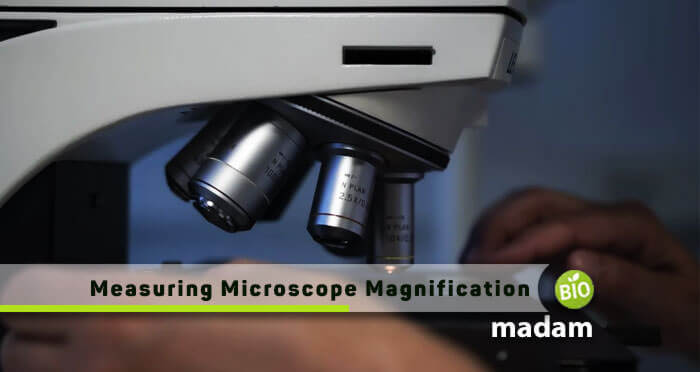Everything around us exists with the littlest details, necessitating us to observe them and be in awe. All these scientific inventions created till now are the results of studies made on these observations. Now, the question arises that how, why, when, and what are the subjects that lead to this technological success. It is all somehow related to a microscope and its magnification power.
Magnification
Magnification refers to the enlargement in the image of anything tiniest that cannot be seen without a microscope. It gives us a certain numerical number which is why termed magnification.
Formula to Calculate Magnification
As we have generally discussed magnification before, here is a quick definition to clear your leftover confusion.
“The ratio of the height of the image to the height of the object is called magnification.”
Now, moving towards its formula:
Magnification (m) = h / h’ where h = height of the image and h’ = height of the object.
Types of Lenses and Microscopes
Another type of microscope is the compound microscope, which uses normal light and has two lenses, called an ocular lens and an objective lens
The microscopes frequently used in laboratories are usually simple microscopes.
Some research labs also use electron microscopes. Simple, compound and electron microscopes are utilized according to need. Let’s read further about the lenses.
Simple Lens
A simple lens has the least power to magnify. Its potential ranges from 2x to 6x. For example, a simple magnifying glass or spectacles have a simple lens.

Compound Lens
Such lenses are mostly used in microscopes and telescopes. Their magnifying power ranges from 4x, 10x, 40x, 100x, and 400x. Moreover, they can magnify objects that a simple microscope cannot. Usually, light microscopes and high-quality student microscopes have compound lenses.
The Process to Magnify the Objects Under a Microscope
The entire process of magnification by a microscope is very simple. Let’s walk through its steps one by one below:
- The slide is placed on the stage properly, and the 4x (maybe any other range) object fixes so that it doesn’t create in problem during magnifying.
- The slide should be arranged over the aperture having the object that you want to view. Then you should drive the stage clip toward the slide and move it over it to lock the slide to that place.
- With your eyes open and viewing from the eyepiece, use the coarse adjustment knob to move it in an upward direction and when the picture of the object becomes lucid and clear, then stop there. If you still have any problem with opening both of your eyes, then place one hand over an eye.
- When you change the magnification power, there is no need to refocus it as all microscopes are parfocal.
- The image can be further magnified by rotating the nosepiece to 10x power.
- If you turn the adjustment knob a little, you can get a clearer image with a greater focus on the object.
- If you further want to increase the magnification power, turn the nosepiece to 40x.
Total Magnification
One can calculate total magnification by multiplying the objective piece with the power of the eyepiece, usually set to 10x.
Precautions

- Always touch the lenses with your finger; also, make sure to clean them with paper specifically for the glass.
- The cover should always be put on the microscope when it is not in use.
- For holding the microscope, use both of your hands. Grasp the microscope’s arm with one hand and support the microscope by putting your other hand under the base.
However, there are different microscopes to view and magnify numerous objects with several ranges of powers. Some of them are the dark-field microscope, electron microscopes, florescent microscope, scanning electron microscope, etc. Making the magnification utilized properly can really change your view of the world!

Jeannie has achieved her Master’s degree in science and technology and is further pursuing a Ph.D. She desires to provide you the validated knowledge about science, technology, and the environment through writing articles.

